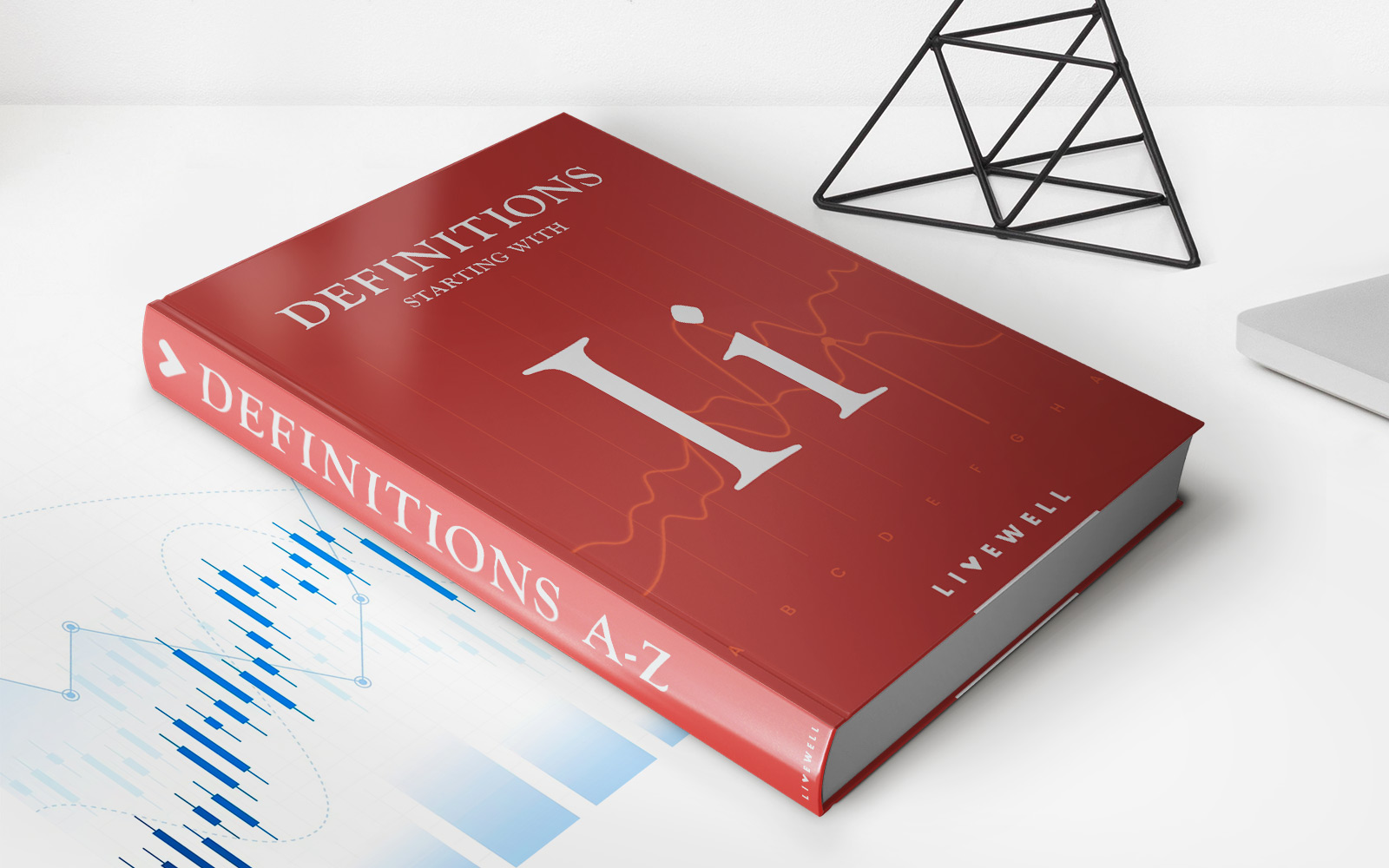

Finance
Why Dental Insurance Is So Bad
Published: November 12, 2023
Discover why dental insurance is often considered a finance headache. Explore the pitfalls, limitations, and alternatives to dental coverage.
(Many of the links in this article redirect to a specific reviewed product. Your purchase of these products through affiliate links helps to generate commission for LiveWell, at no extra cost. Learn more)
Table of Contents
Introduction
Dental insurance is a common form of coverage that is intended to help individuals and families manage the high costs associated with dental care. While health insurance is often praised for its comprehensive coverage and accessible benefits, dental insurance has a reputation for falling short in several key areas. Understanding why dental insurance is perceived as “bad” is crucial for individuals seeking affordable and comprehensive dental care.
Unlike health insurance, dental insurance plans are often offered as separate policies, with individuals or employers having to pay additional premiums on top of their regular health insurance coverage. This means that individuals and families may have to bear the burden of high premiums just to have access to dental benefits.
Furthermore, dental insurance plans commonly come with limited coverage, which can leave individuals with significant out-of-pocket expenses for basic procedures. While some preventive and diagnostic services may be covered at higher percentages, many necessary treatments like fillings, root canals, and crowns may only be covered at a fraction of the cost. This limited coverage can make it challenging for individuals to afford necessary dental care.
Another drawback of dental insurance is the presence of waiting periods. Unlike health insurance, dental policies often require individuals to wait a certain period of time before they can access major dental procedures. This waiting period can range from a few months to a year, depending on the specific policy. This means that individuals may have to delay important dental treatments, increasing the risk of further oral health issues.
In addition, dental insurance plans commonly exclude coverage for pre-existing conditions. This can be a major obstacle for individuals with existing dental issues who are looking for coverage. They may be left without any financial assistance and are forced to pay for expensive procedures entirely out of pocket.
Furthermore, dental insurance often imposes annual maximums, which limits the amount of coverage individuals can receive within a year. Once this annual maximum is reached, individuals are responsible for paying for any further treatment costs. This can be a major drawback for individuals with extensive dental needs or chronic conditions.
High Premiums
One of the main reasons why dental insurance is often considered “bad” is the high premiums that individuals and families have to pay. Unlike health insurance, which is often provided by employers or included in government programs, dental insurance plans typically require individuals to pay separate premiums on top of their regular health insurance coverage.
These additional premiums can increase the overall cost of insurance and put a strain on people’s budgets. For individuals who are already struggling to afford healthcare, adding the cost of dental insurance can be a financial burden.
Furthermore, dental insurance premiums can vary significantly depending on the plan and the provider. Some plans may have lower premiums but offer limited coverage, while others may have higher premiums but provide more comprehensive benefits. This makes it challenging for individuals to find an affordable dental insurance plan that meets their specific needs.
It’s important to note that even with high premiums, dental insurance may not cover all dental expenses. Many plans have deductibles and copayments that individuals have to pay out of pocket before the insurance coverage kicks in. This means that even after paying the high premiums, individuals may still have to bear a significant portion of the dental costs themselves.
Additionally, dental insurance plans may have waiting periods before individuals can access certain services or procedures. During this waiting period, individuals are typically not eligible for coverage, even if they have been paying the premiums. This delay in coverage can be frustrating for individuals who need immediate dental care.
In summary, dental insurance often comes with high premiums that can be financially burdensome for individuals and families. The additional cost of dental insurance, along with deductibles, copayments, and waiting periods, makes it more difficult for individuals to access affordable dental care.
Limited Coverage
Another aspect that contributes to the perceived “bad” nature of dental insurance is the limited coverage it provides. Unlike health insurance, which often covers a wide range of medical treatments and procedures, dental insurance plans tend to have more restrictive coverage.
While dental insurance may cover preventive and diagnostic services, such as cleanings, X-rays, and check-ups, more extensive and necessary treatments like fillings, root canals, and crowns are often only partially covered or subject to limitations.
For example, a dental insurance plan may cover 80% of the cost of a filling, leaving the individual responsible for the remaining 20%. This can still result in significant out-of-pocket expenses, especially for individuals who require multiple treatments.
In addition, dental insurance plans often have limitations and exclusions for certain procedures. Cosmetic dentistry, such as teeth whitening or veneers, is typically not covered by dental insurance as they are considered elective treatments. This can be disappointing for individuals who want to enhance their smile but have to bear the full cost on their own.
Orthodontic treatment, such as braces or Invisalign, is another area where dental insurance coverage is often limited. Many plans have age limits or strict requirements for orthodontic coverage, leaving adults or individuals with less severe alignment issues without insurance assistance.
Moreover, some dental insurance plans place restrictions on the frequency of certain procedures. For example, they may cover one X-ray per year, even if additional X-rays are needed for proper diagnosis or ongoing treatment.
Overall, the limited coverage of dental insurance can be frustrating for individuals who need extensive dental care. It often results in higher out-of-pocket expenses and limitations on the treatments they can afford, potentially leading to delays in necessary dental treatments.
Waiting Periods
One of the common drawbacks of dental insurance is the presence of waiting periods. Unlike health insurance, dental insurance often requires individuals to wait a certain period of time before they can access coverage for major dental procedures.
The length of the waiting period can vary depending on the specific dental insurance plan. It can range from a few months to a year, during which individuals are not eligible for coverage for certain treatments. This can be particularly problematic for individuals who have immediate dental needs or require urgent procedures.
Waiting periods can be a significant barrier to receiving timely dental care. Conditions that should be addressed promptly, such as tooth decay, infections, or severe pain, may have to be endured for an extended period of time while waiting for the insurance coverage to become effective.
Waiting periods can also impact individuals who are switching dental insurance plans or who have recently enrolled in a plan. They may find themselves in a situation where they previously had coverage for certain treatments, but under the new plan, they have to wait again before they can access the same services.
Furthermore, waiting periods can lead to financial strain for individuals who need immediate dental care but are unable to afford the full cost without insurance coverage. It can force them to delay or forgo important treatments, which may result in further deterioration of their oral health.
It is important for individuals to be aware of the waiting periods associated with their dental insurance plans. Planning ahead and considering the waiting period can help individuals make informed decisions about their oral health and seek alternative options if necessary, such as dental discount plans or financing options.
In summary, waiting periods in dental insurance can be frustrating and detrimental to individuals needing immediate dental care. They can lead to delays in treatment, financial strain, and potential worsening of oral health conditions.
Pre-existing Conditions
One significant drawback of dental insurance is the exclusion of coverage for pre-existing conditions. Unlike health insurance, which is required to cover pre-existing medical conditions under the Affordable Care Act, dental insurance plans typically have limitations when it comes to pre-existing dental issues.
A pre-existing condition is any dental problem that an individual has prior to enrolling in a dental insurance plan. This can include conditions such as gum disease, missing teeth, or oral infections. Dental insurance companies often exclude coverage for these pre-existing conditions, leaving individuals responsible for the full cost of treatment.
This lack of coverage for pre-existing conditions can be a major obstacle for individuals who require dental care. It may discourage individuals with existing dental issues from seeking insurance or put them in a situation where they have to pay for expensive treatments entirely out of pocket.
Excluding coverage for pre-existing conditions can also create a barrier to individuals obtaining necessary dental care. It may cause individuals to delay or avoid seeking treatment, which can lead to increased discomfort, further complications, and potentially higher costs in the long run.
While some dental insurance plans may have waiting periods for certain treatments, pre-existing conditions are typically not covered at all, regardless of the waiting period. This can be frustrating for individuals who have been consistently paying their premiums and are still unable to receive coverage for their dental issues.
It is important for individuals with pre-existing dental conditions to carefully review the coverage limitations of any dental insurance plan they are considering. They may need to explore alternative options, such as dental discount plans or negotiating payment plans with their dental providers, to ensure they can access the necessary care without incurring excessive out-of-pocket costs.
In summary, the exclusion of coverage for pre-existing conditions in dental insurance plans poses a significant challenge for individuals with existing dental issues. It can deter individuals from obtaining insurance and result in limited access to necessary dental treatments.
Annual Maximums
One aspect of dental insurance that is often considered unfavorable is the presence of annual maximums. An annual maximum refers to the limit on the amount of dental expenses that a dental insurance plan will cover within a given year.
While the specific amount of the annual maximum can vary depending on the plan, it is common for dental insurance plans to have a cap on coverage, typically ranging from $1,000 to $1,500. Once an individual reaches this maximum amount, they are responsible for covering the full cost of any additional dental treatments for the rest of the year.
The presence of annual maximums can pose a challenge for individuals with extensive dental needs or chronic dental conditions. For example, individuals requiring multiple fillings, root canals, or crowns may quickly reach the annual maximum and have to pay out-of-pocket for any further treatments.
Moreover, individuals who require more costly dental procedures, such as implants or major dental surgeries, can face significant financial burdens. Since these procedures are often expensive, they can quickly exhaust the annual maximum limit, leaving individuals to cover the remaining costs themselves.
In addition, annual maximums can be especially problematic for individuals with families. Dental expenses for multiple family members can add up quickly, and reaching the annual maximum limit becomes more likely. This can lead to difficult decisions about prioritizing and budgeting for dental treatments, potentially delaying necessary care.
It is essential for individuals to carefully review their dental insurance plan’s annual maximum and consider it when planning their oral healthcare needs. Understanding the limitations and potential financial implications of reaching the maximum can help individuals make informed decisions about their dental care.
In summary, the presence of annual maximum limits in dental insurance plans can restrict the amount of coverage individuals receive in a given year. This can create financial challenges for individuals with extensive dental needs and may require careful planning to ensure affordable access to necessary treatments.
Deductibles and Copayments
One aspect of dental insurance that can be frustrating for policyholders is the requirement to pay deductibles and copayments. Deductibles are a predetermined amount that individuals must pay out-of-pocket before their dental insurance coverage kicks in. Copayments, on the other hand, are a fixed percentage or flat fee that individuals are responsible for paying for each dental treatment or service.
Deductibles and copayments can add to the overall cost of dental care and pose a financial burden for individuals and families. The amount of the deductible and copayment can vary depending on the dental insurance plan, but it is common to encounter these additional expenses in dental insurance coverage.
For example, a dental insurance plan may have a $100 deductible, meaning that individuals must pay the first $100 of their dental expenses before the insurance coverage starts to contribute. Additionally, the plan may require individuals to pay a 20% copayment for each dental procedure, with the insurance covering the remaining 80%.
These added costs can accumulate quickly, particularly for individuals who require multiple treatments or have extensive dental needs. The deductibles and copayments, in conjunction with the monthly premiums, can put a strain on individuals’ budgets and lead to hesitation or delays in seeking necessary dental care.
Furthermore, the complexity of deductibles and copayments can make it challenging for individuals to estimate their out-of-pocket expenses accurately. The variations in payment structures among different services and treatments can make it difficult to predict the final cost of a dental procedure, leaving individuals unsure about what they will owe.
It’s important for individuals to carefully review the details of their dental insurance plan and understand the deductibles and copayments they are responsible for. By having a clear understanding of these costs, individuals can better plan and budget for their dental expenses.
In summary, the presence of deductibles and copayments in dental insurance plans contributes to the overall cost of dental care. These additional expenses can be burdensome for individuals and families, potentially impacting their ability to access necessary treatments.
Complex Claims Process
Dealing with the claims process is another aspect that can make dental insurance a frustrating experience for many individuals. Compared to health insurance, the claims process for dental insurance can be more complex and time-consuming.
When individuals receive dental treatment, they typically need to submit a claim to their insurance company to seek reimbursement for the covered services. This involves gathering all the necessary documentation, such as dental receipts and treatment codes, and submitting them to the insurance company for review and payment.
The complexity of the claims process can stem from various factors. First, dental insurance plans often have specific requirements and guidelines in terms of what procedures and treatments are covered. This means individuals need to ensure that the treatment they received falls within the covered services listed in their plan. If the claim includes any ineligible procedures, it can result in claim denials or delays.
In addition, the claims process may require individuals to fill out lengthy forms or provide detailed explanations about the treatment received. This can be time-consuming and confusing, especially for individuals who are not familiar with dental terminology or the specific requirements of their insurance plan.
Furthermore, dental insurance plans may have limitations on frequencies for certain procedures. This means that even if a treatment is covered, individuals may need to provide additional documentation to prove that the treatment was medically necessary and not excessive.
Another challenge with the claims process is the potential for delays in reimbursement. Due to the manual review and processing of claims, it can take weeks or even months for individuals to receive reimbursement for their dental expenses. This delay in payment can make it difficult for individuals to manage their finances and can deter them from seeking timely dental care.
It is important for individuals to familiarize themselves with the claims process and requirements of their dental insurance plan. Understanding what is covered and the documentation needed to submit a claim can help individuals navigate the process more efficiently and reduce the likelihood of claim denials or delays.
In summary, the complex claims process associated with dental insurance can be time-consuming and frustrating for individuals. The need to navigate specific requirements, complete detailed forms, and the potential for claim denials or delays can create a barrier to accessing timely reimbursement for dental expenses.
Lack of Orthodontic Coverage
One of the limitations that individuals often encounter with dental insurance is the lack of orthodontic coverage. Orthodontic treatment, such as braces or Invisalign, is commonly excluded or limited in dental insurance plans.
Orthodontic treatment is often necessary to correct misaligned teeth, bite issues, or other dental problems. However, the cost of orthodontic treatment can be substantial, with the average cost of braces ranging from $3,000 to $7,000, and even higher for more complex cases.
Unfortunately, many dental insurance plans do not include orthodontic coverage as part of their standard benefits. This means that individuals seeking orthodontic treatment may have to bear the full cost on their own, which can be a significant financial burden for many families.
Some dental insurance plans may offer limited coverage for orthodontics, but with strict limitations, such as age restrictions or only providing coverage for severe orthodontic conditions. This can leave individuals who do not meet the specific criteria without any insurance assistance for orthodontic treatment.
As a result, individuals and families seeking orthodontic treatment often have to consider alternative options, such as dental discount plans or financing options, to manage the costs effectively. These alternatives may provide some level of savings or payment plans to make orthodontic treatment more affordable.
It is important for individuals to carefully review their dental insurance plan’s coverage regarding orthodontics. Understanding the limitations and potential financial implications can help individuals make informed decisions about orthodontic treatment and explore alternative options, if necessary.
In summary, the lack of orthodontic coverage in dental insurance plans can be a significant limitation. The high costs of orthodontic treatment can burden individuals and families who seek necessary dental corrections, requiring them to explore other avenues to manage the expenses effectively.
Lack of Coverage for Cosmetic Procedures
Another limitation of dental insurance is the lack of coverage for cosmetic procedures. While dental insurance typically covers treatments necessary for maintaining oral health, such as preventive care and necessary restorative procedures, cosmetic dentistry procedures are often considered elective and therefore not covered by dental insurance plans.
Cosmetic dentistry focuses on improving the appearance of teeth and enhancing smiles. Procedures such as teeth whitening, veneers, or cosmetic bonding are examples of treatments that fall into the cosmetic category. These procedures are typically not covered by dental insurance because they are considered aesthetic in nature and not necessary for maintaining oral health.
The lack of coverage for cosmetic procedures can be frustrating for individuals who desire to enhance their smiles but are unable to afford the full cost of these treatments out of pocket. Many people prioritize their oral health and overall well-being, but having a smile they are self-conscious about can impact their confidence and quality of life.
While dental insurance may not cover cosmetic procedures, individuals interested in cosmetic dentistry options still have alternatives. Some dental offices offer financing options or payment plans to help individuals manage the costs over time. Additionally, there are specialized dental discount plans that may provide savings on cosmetic procedures.
It’s essential for individuals considering cosmetic dentistry to consult with their dentist or a cosmetic dentist to explore their options and understand the potential costs involved. They can discuss alternative treatments or payment plans that align with their budget and desired outcomes.
In summary, dental insurance generally does not cover cosmetic procedures, leaving individuals responsible for the full cost of these treatments. While this can be disappointing for those seeking aesthetic enhancements, exploring alternative payment options or specialized discount plans can help individuals achieve the smile they desire.
Inadequate Provider Network
One issue that individuals often face with dental insurance is the inadequate provider network. Unlike health insurance plans that typically have a wide network of healthcare providers, dental insurance plans may have a more limited selection of dentists and dental specialists.
This limited provider network can pose challenges for individuals, especially if they have an established relationship with a dentist or if they live in an area with few participating providers. It can be frustrating to discover that the dentist they trust and prefer does not accept their dental insurance plan.
Moreover, individuals in rural or remote areas may experience even greater difficulty finding a dental provider who accepts their insurance. This can result in limited access to dental care and potential delays in receiving necessary treatments.
When individuals are limited to a specific network of dental providers, they may feel compelled to choose a dentist solely based on their participation in the insurance plan, rather than their qualifications, experience, or personal preferences.
Inadequate provider networks can also lead to longer wait times for appointments. If there are only a few participating dental offices in a particular area, it can be challenging to schedule an appointment in a timely manner, especially for urgent or emergency care needs.
To address the challenge of limited provider networks, individuals may need to consider alternative strategies. They can explore dental discount plans, which provide discounted rates for dental services at participating providers. Alternatively, they may opt to pay out of pocket to continue seeing their preferred dentist, if feasible.
In summary, the inadequate provider network associated with dental insurance can impact individuals’ ability to access the dental care they need. Limited options and longer wait times can be frustrating, requiring individuals to explore alternative solutions to access quality dental care.
Conclusion
While dental insurance aims to provide individuals and families with financial protection for dental care, it is important to recognize the limitations and challenges that come with it. The overall perception of dental insurance as “bad” is due to various factors, including high premiums, limited coverage, waiting periods, exclusions for pre-existing conditions, annual maximums, complex claims processes, lack of orthodontic and cosmetic coverage, and inadequate provider networks.
High premiums can strain individuals’ budgets, making it difficult to afford the dental coverage they need. Limited coverage often leaves individuals with significant out-of-pocket expenses for necessary treatments. Waiting periods and exclusions for pre-existing conditions can delay access to crucial dental care and leave individuals with financial burdens. Annual maximums can restrict the amount of coverage individuals receive within a year. The complex claims process can be time-consuming and result in delays in reimbursement. The lack of orthodontic and cosmetic coverage can hinder individuals from accessing treatments to improve their smiles. Lastly, inadequate provider networks can limit individuals’ options and lead to longer wait times for appointments.
Despite these drawbacks, it is essential to understand that dental insurance may still provide some level of financial assistance for preventive care and necessary dental treatments. It is crucial for individuals to carefully review their dental insurance plans, understand the limitations, and explore alternative options when necessary.
Alternatives such as dental discount plans, payment plans offered by dental providers, and financing options can help individuals manage the costs associated with dental care that may not be covered by insurance. Seeking out providers who offer flexible payment options or have affordable self-pay rates can also be beneficial.
Ultimately, maintaining good oral health is crucial for overall well-being. Individuals should consider their individual dental needs, budget, and priorities when deciding on the most suitable dental coverage options. Evaluating the cost-benefit ratio and understanding the potential limitations can help individuals make informed decisions to ensure access to affordable and comprehensive dental care.














